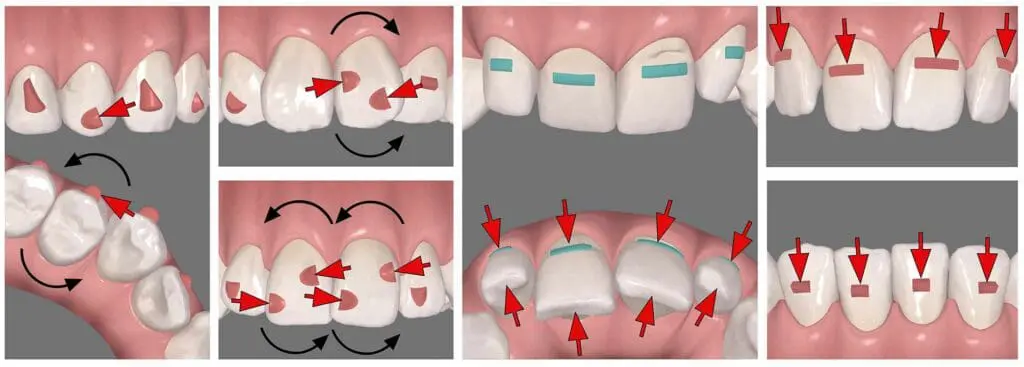Back to Basics: How much do attachments improve aligner efficiency?
In the second post of this Back to Basics Series. Martyn Cobourne outlines the evidence underpinning the use of clear aligner attachments.
The use of attachments with aligner therapy is standard procedure these days. They are prescribed by the manufacturer and/or orthodontist during the treatment planning process. Attachments serve various functions, primarily improving force delivery and the predictability of tooth movements. They also help improve the retention of the aligner, preventing slippage or loss of tracking as the teeth are moved.
Attachment function is determined primarily by shape, size, and anatomical position on the tooth crown (mesiodistal width, long axis, and buccal contour). It seems generally accepted that attachments improve orthodontic tooth movement with aligners. Still, the evidence base is not particularly robust, relying primarily on small-scale clinical studies or finite element analysis.

What is the evidence?
Current evidence has been recently summarized in several systematic reviews, and here, we attempt to synthesize their findings (Alam et al., 2023; Jedlinski et al., 2023; Nucera et al., 2022). We would like to point out that the reviews published by Jedlinski and Nucera may be published in predatory journals. As a result, we must assume that the evidence that we include is weak.
So, what do they say?
- In terms of attachment bonding procedure, rigid trays provide the highest accuracy in transferring attachments, but they can be more challenging to remove and precipitate an increased risk of attachment loss on removal (Jedlinski et al., 2023);
- The use of flowable or orthodontic bonding composite with as much filler as possible is generally recommended for attachments – the more filler, the better the shear bond strength and better the transfer accuracy (Jedlinski et al., 2023);
- The use of attachments promotes greater control and a higher range of tooth movements and increases aligner retention (Jedlinski et al., 2023);
- The data would suggest that aligner material has more effect on tooth movement than attachment size or shape (Alam et al., 2023);
- In terms of orthodontic treatment outcomes, conventional attachments with at least one bevelled edge are beneficial for tooth movement and anchorage (Jedlinski et al., 2023);
- We can improve Anterior root torque using attachments and power ridges, but root control remains difficult with aligners (Nucera et al., 2022);
- When attempting retraction of anterior teeth, posterior anchorage reinforcement using attachments on the posterior teeth can be beneficial (Nucera et al., 2022). Specifically, increasing the number of attachments has a positive effect, whilst optimised and rectangular horizontal attachments have shown the best results (Jedlinski et al., 2023);
- On anterior teeth, it is worth considering the placement of attachments on the lingual surface for aesthetic and therapeutic reasons (Jedlinski et al., 2023);
- Evidence regarding the influence of attachments on intrusion or extrusion of teeth is lacking, although they may improve intrusion (Nucera et al., 2022) whilst
- The evidence relating to the effect of attachments on rotational control is also lacking. While larger attachments with sharper edges seem to show better outcomes, paired attachments on the lingual and labial surfaces or attachments on adjacent teeth do not (Nucera et al., 2022).
Martyn Cobourne is Professor of Orthodontics at King’s College London. He also runs the excellent Evidence-Based Orthodontics Facebook Group and the Evidence-Based Orthodontics Course.
References

As always, a really helpful, evidenced based, clinically relevant blog post by Martyn. Thank you !